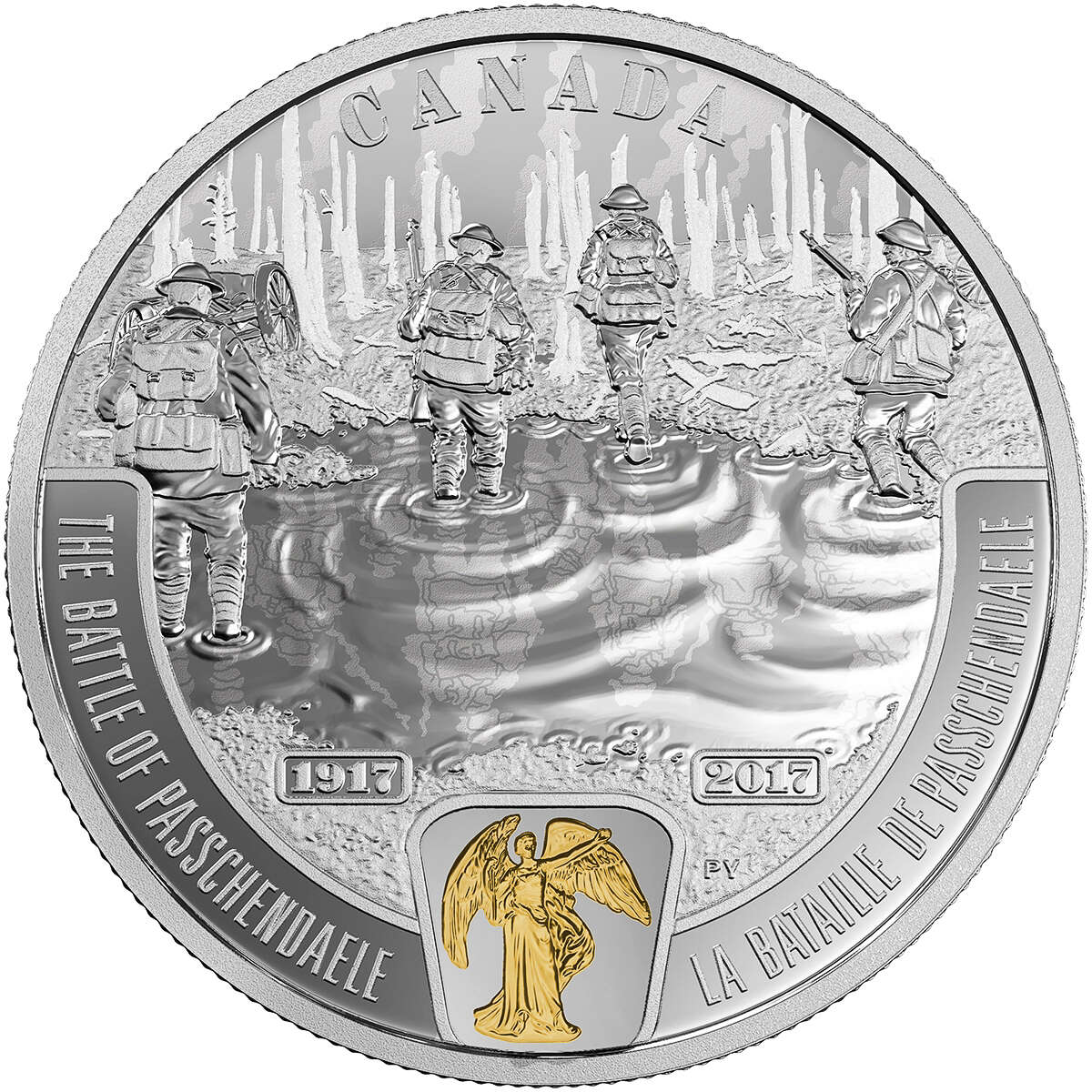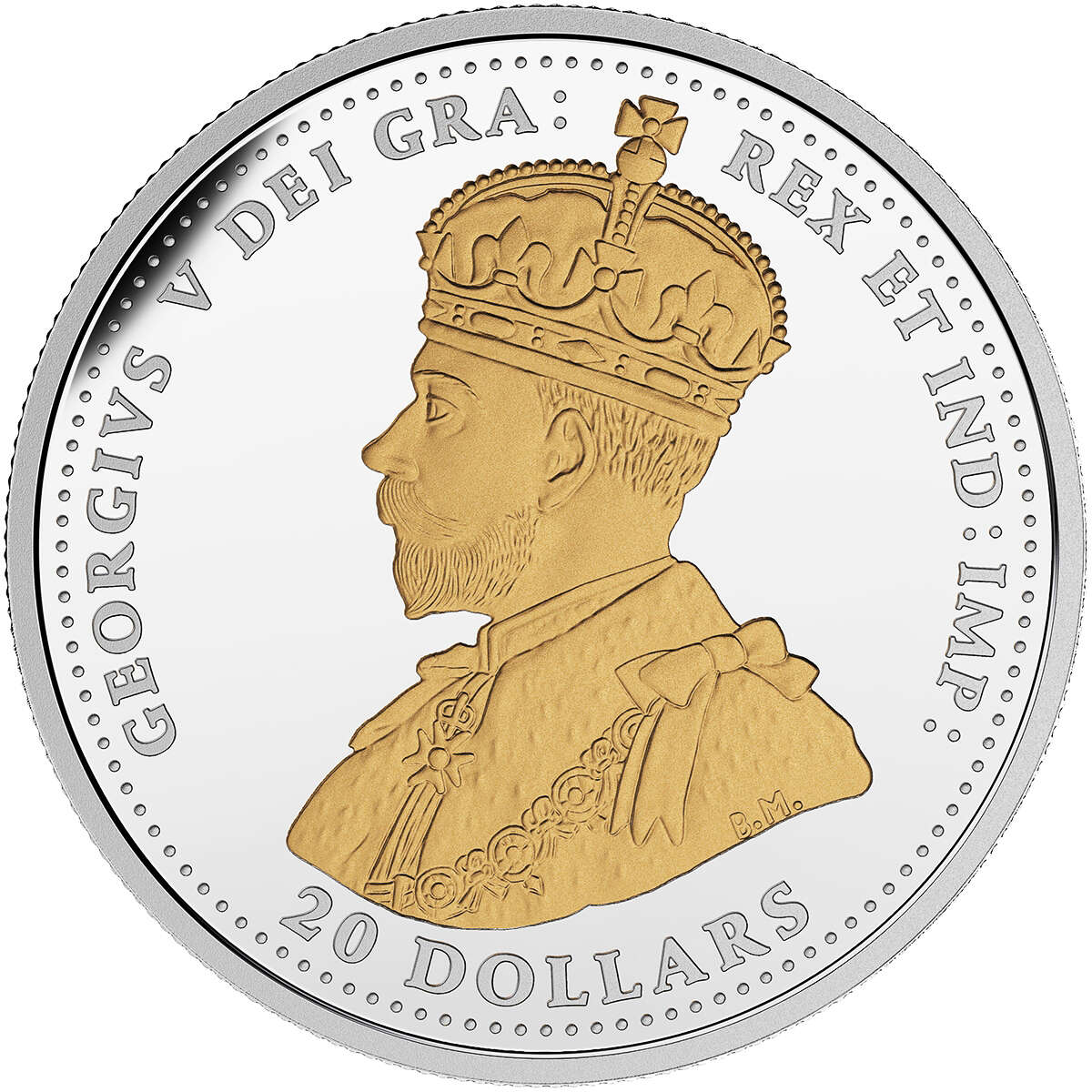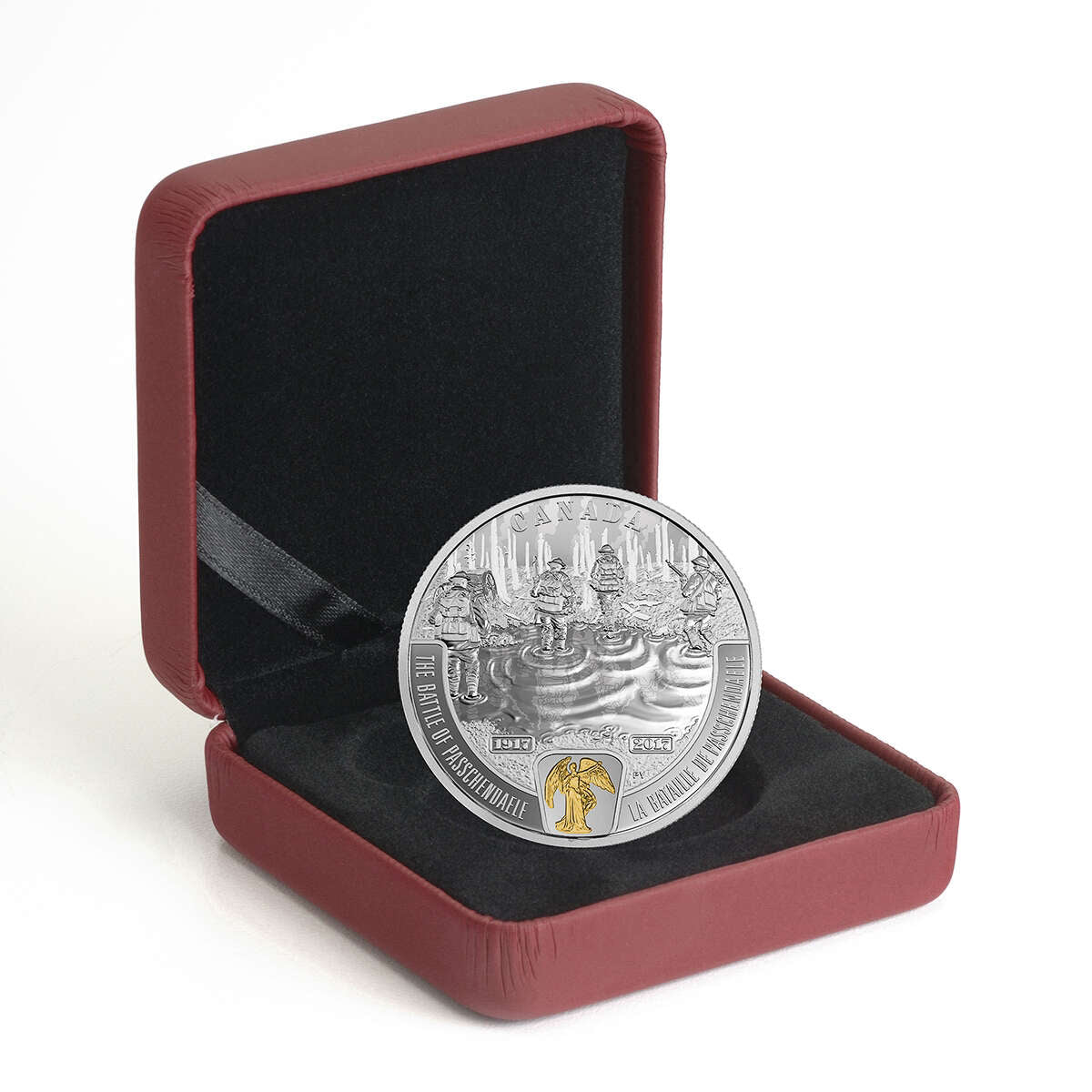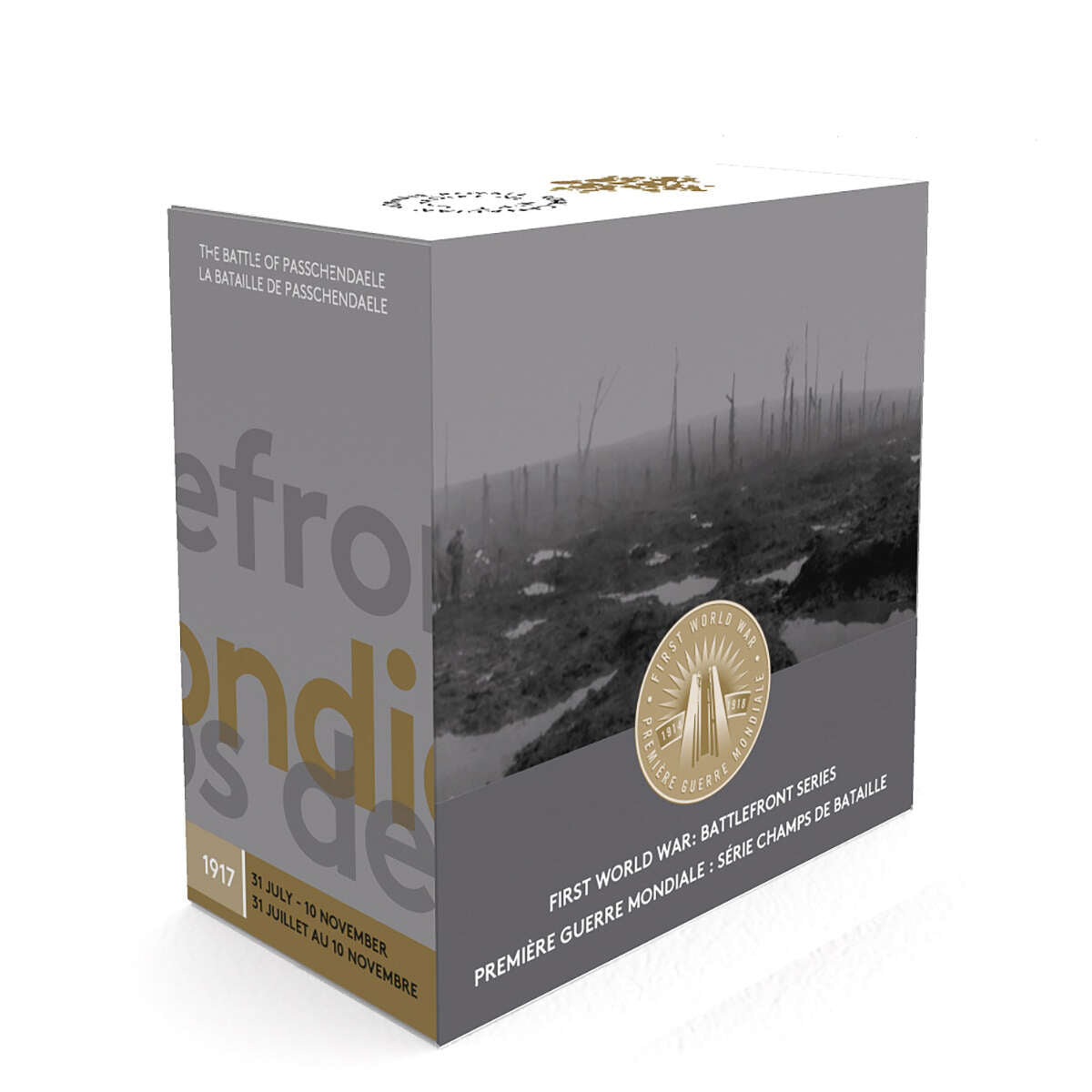Description
This 2017 $20 one ounce pure silver coin issued by the Royal Canadian Mint honours the Canadians who fought at the Battle of Passchendaele, which has become synonymous with mud-soaked tragedy and triumph. Mintage is limited to 10,000 coins. GST/HST exempt.
The Design:
The reverse design by Canadian artist Pandora Young features a powerfully evocative scene that captures the spirit of Canada’s participation in the Battle of Passchendaele. A first-person perspective immerses the viewer in the action for a closer connection to this important chapter in our past. The setting is a chilling one: highly detailed engraving re-creates the devastated landscape in the background, where months of heavy artillery fire and relentless rains have transformed the once-fertile terrain into a quagmire. Four Canadian soldiers move across the muddy battlefield, their silhouettes mirrored in the rainwater at their feet. A closer look at the water reveals several more reflections that represent their fallen comrades, whose memory is carried forward by their surviving brothers in arms—and a nation.
Passchendaele:
In the summer of 1917, the British launched failed assaults against German forces holding the plateau overlooking the city of Ypres, Belgium. The battlefield became a huge quagmire with the relentless rain and constant barrage of shellfire.
Sir Arthur Currie, commander of the Canadian Corps, objected to the battle, fearing it could not be won without a terrible loss of lives. However Field Marshal Sir Douglas Haig (commander of the British Expeditionary Force) was desperate for a victory and insisted on the effort, believing that even a limited victory would help to salvage the campaign. Left with no choice but to attack, Currie prepared carefully for the fight, understanding that deliberate preparation, especially for artillery and engineers, was the key to advancing over this shattered landscape. The Canadians arrived in Flanders in mid-October to relieve Australian and New Zealand troops and were shocked by the terrible battlefield conditions. Currie ordered the construction of new roads, and other projects in preparation of the attack on 26 October - the first of four phases in a battle he estimated might cost 16,000 Canadians killed or wounded. By mid-November, having captured the ridge, his estimate proved eerily accurate, with 15,654 Canadian fallen.
More than 15,600 Canadians were killed and wounded at the battle of Passchendaele, these were among the 275,000 casualties lost overall to the armies under British command. The Germans suffered 220,000 killed and wounded. In 1918, all the ground gained by the Allies was evacuated because of a looming German assault. A century later, the Battle of Passchendaele is remembered as a symbol of the worst horrors of the First World War.






